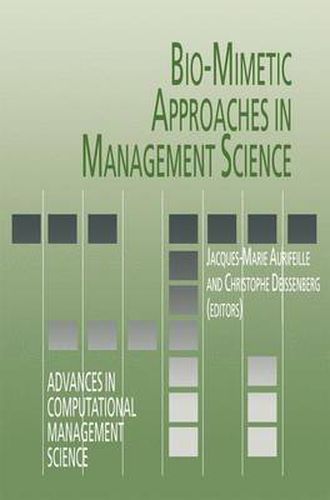Readings Newsletter
Become a Readings Member to make your shopping experience even easier.
Sign in or sign up for free!
You’re not far away from qualifying for FREE standard shipping within Australia
You’ve qualified for FREE standard shipping within Australia
The cart is loading…






This title is printed to order. This book may have been self-published. If so, we cannot guarantee the quality of the content. In the main most books will have gone through the editing process however some may not. We therefore suggest that you be aware of this before ordering this book. If in doubt check either the author or publisher’s details as we are unable to accept any returns unless they are faulty. Please contact us if you have any questions.
Management science is often confronted with optimization problems characterized by weak underlying theoretical models and complex constraints. Among them, one finds data analysis, pattern recognition (classification, multidimensional analysis, discriminant analysis) as well as modelling (forecasting, confirmatory analysis, expert system design). In recent years, bio-mimetic approaches have received growing attention from marketing, finance and human resource researchers and executives as effective tools for practically handling such problems. Bio-mimetic approaches include a variety of heuristic methods - such as neural networks, genetic algorithms, immunitary nets, cellular automata - that simulate nature’s way of solving complex problems and, thus, can be considered as numerical transpositions of true life problem solving. This text presents a selection of papers on bio-mimetic approaches and their application to management science. Most of these papers were presented at an ACSEG/CAEMS International Congress (Approches Connexionnistes en Sciences Economiques et de Gestion/Connectionnist Approaches in Economics and Management Science). All papers combine the discussion of conceptual issues with illustrative empirical applications, and contain detailed information on the way heuristics are practically implemented. The advantages and limits of the bio-mimetic approaches are discussed in several of the papers, either by comparing these approaches with more classical methods (logit models, clustering), or by investigating specific issues like overfitting and robustness. Synthesizing overviews are provided, as well as tools for coping with some of the limitations of bio-mimetic methods.
$9.00 standard shipping within Australia
FREE standard shipping within Australia for orders over $100.00
Express & International shipping calculated at checkout
This title is printed to order. This book may have been self-published. If so, we cannot guarantee the quality of the content. In the main most books will have gone through the editing process however some may not. We therefore suggest that you be aware of this before ordering this book. If in doubt check either the author or publisher’s details as we are unable to accept any returns unless they are faulty. Please contact us if you have any questions.
Management science is often confronted with optimization problems characterized by weak underlying theoretical models and complex constraints. Among them, one finds data analysis, pattern recognition (classification, multidimensional analysis, discriminant analysis) as well as modelling (forecasting, confirmatory analysis, expert system design). In recent years, bio-mimetic approaches have received growing attention from marketing, finance and human resource researchers and executives as effective tools for practically handling such problems. Bio-mimetic approaches include a variety of heuristic methods - such as neural networks, genetic algorithms, immunitary nets, cellular automata - that simulate nature’s way of solving complex problems and, thus, can be considered as numerical transpositions of true life problem solving. This text presents a selection of papers on bio-mimetic approaches and their application to management science. Most of these papers were presented at an ACSEG/CAEMS International Congress (Approches Connexionnistes en Sciences Economiques et de Gestion/Connectionnist Approaches in Economics and Management Science). All papers combine the discussion of conceptual issues with illustrative empirical applications, and contain detailed information on the way heuristics are practically implemented. The advantages and limits of the bio-mimetic approaches are discussed in several of the papers, either by comparing these approaches with more classical methods (logit models, clustering), or by investigating specific issues like overfitting and robustness. Synthesizing overviews are provided, as well as tools for coping with some of the limitations of bio-mimetic methods.